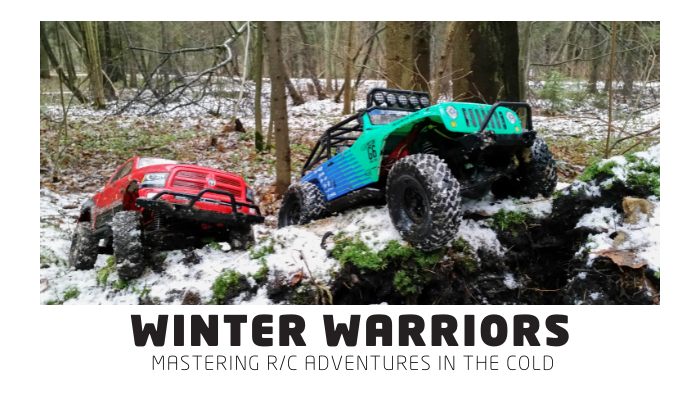Winter transforms the landscape into a playground for RC enthusiasts, offering unique challenges and exhilarating experiences.
To ensure your RC adventures remain enjoyable and your equipment stays in top condition, consider the following tips and tricks for operating RC vehicles during the colder months.
1. Battery Care and Performance
Cold temperatures can significantly impact battery efficiency, leading to reduced run times and performance. To mitigate these effects:
-
Pre-Warm Batteries: Keep your LiPo batteries warm before use to maintain optimal voltage levels. A recent test revealed a 2.75% voltage drop in cold LiPo batteries, resulting in a 7.5% reduction in top speed.
-
Monitor Run Times: Expect shorter run times in colder conditions. For instance, a 3000mAh battery that runs for 15 minutes in summer might only last 10 minutes in winter.
2. Waterproofing and Protection
Snow and moisture can pose risks to your RC vehicle’s electronics. Ensure your vehicle is prepared:
-
Waterproof Electronics: Verify that your RC car’s electronic components are waterproof or adequately protected against moisture. Even waterproof vehicles require special care; avoid submerging them completely in water. Most Castle ESC for surface are fully potted designs for all weather conditions.
-
Protective Measures: Apply dielectric grease to connectors and electrical components to prevent corrosion. Additionally, using winter-friendly lubricants on moving parts like gears and bearings can prevent them from freezing or getting stuck.
3. Tire Selection and Traction
Maintaining traction on snow and ice is crucial for control and performance. Consider the following:
-
Specialized Tires: Equip your vehicle with winter-specific tires featuring spikes or unique tread patterns to enhance grip on slippery surfaces.
-
Tire Pressure: Adjusting tire pressure can also enhance grip on soft terrains like snow.
4. Terrain Selection
Choosing the right terrain can make a significant difference in your winter RC experience:
-
Optimal Surfaces: Select open areas with packed snow or frozen surfaces, which provide a better environment for RC car operation compared to deep snow or slush.
5. Post-Run Maintenance
After running your RC vehicle in winter conditions, thorough maintenance is essential:
-
Cleaning: Remove any snow, ice, and salt from your vehicle to prevent corrosion. Dry the car completely before storage to maintain its longevity.
-
Lubrication: Reapply lubricants to moving parts to ensure smooth operation during your next run.
6. Performance Optimization
To maximize performance during winter:
-
Vehicle Selection: Opt for four-wheel-drive (4WD) models, which offer better traction and control on snowy and icy terrains.
-
Driving Style: Adopt a more controlled driving style to prevent damage to the car’s components, as cold temperatures can make plastic parts more brittle.
By following these tips, you can continue to enjoy your RC hobby throughout the winter months, ensuring both you and your vehicle are prepared to tackle the challenges of cold-weather operation.
For a visual guide on waterproofing and winterizing your RC car, check out the following video:





